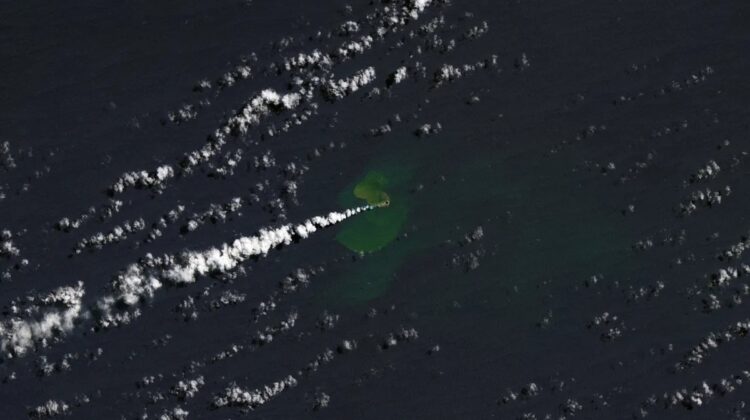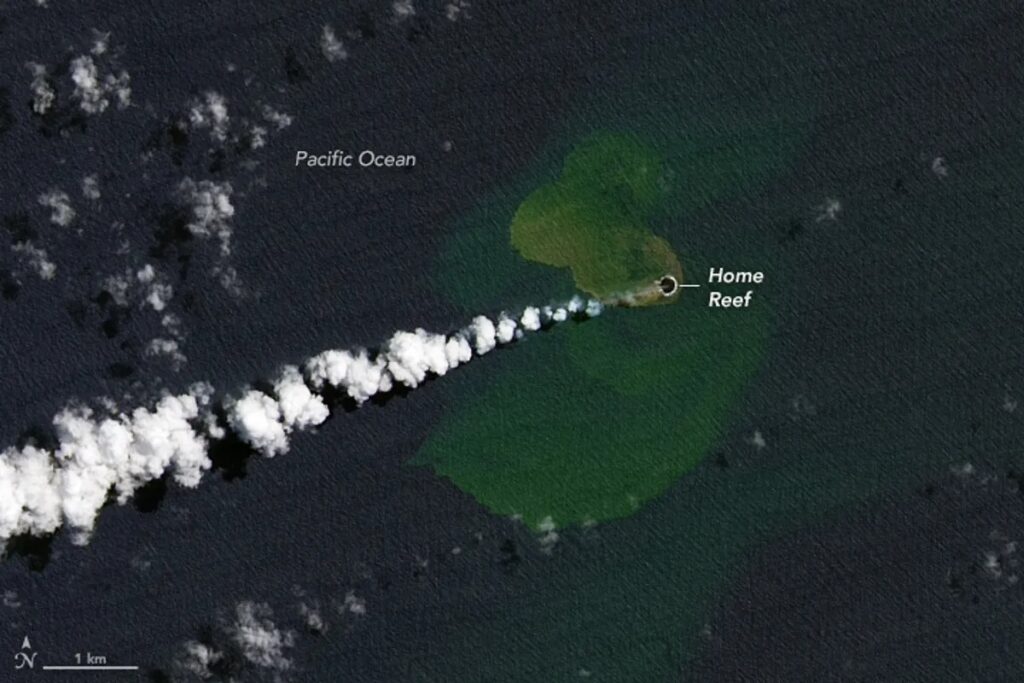
Boom! And just like that, a new island was born.
According to NASA Earth Observatory, a new island has appeared in a region of the southwest Pacific Ocean dotted with submerged volcanoes.
In just eleven hours, a continent appeared from the aquatic depths, formed by gushing lava that had been cooled by the ocean waters and hardened. It all started with the eruption of an underwater volcano located in the Central Tonga Islands on September 10.
Lava kept flowing as the newly formed island developed over the next several days. The island’s diameter was 170 meters (558 feet) on September 16 and increased to 182 meters over the course of the next two days.
By September 20, the island had expanded to a total area of 24,000 square meters (6 acres), with a 10 meter elevation (33 feet).

Images acquired on September 14 by the Landsat 9 satellite showed how the new island formed. We can see a sizable cloud of steam and ash drifting away from the volcano in this natural-color shot. In addition, you can observe a cloud of coloured water around the continent due to the presence of acidic, superheated saltwater that contains sulfur and volcanic rock.
Southwest of Late Island, northeast of Hunga Tonga-Hunga Ha’apai, and northwest of Mo’unga’one are the new island’s locations. The Tonga-Kermadec subduction zone, where three tectonic plates are gradually colliding, is located in this region of the Pacific.
Because of all the tectonic activity, this region of the Pacific has the largest concentration of underwater volcanoes on a seabed ridge.
Sadly, the young island may not last for very long. The volcanic rock can deteriorate fast due to weathering and erosion caused by waves and currents, which means that this freshly created island frequently vanishes swiftly.
However, some recent islands do manage to endure. In this region of the Pacific, an undersea volcano erupted in 2014, creating the huge island of Hunga Tonga-Hunga Ha’apai. To the amazement of experts, the island has already supported a robust ecology, complete with pink blooming plants, nesting sooty tern birds, and barn owls.

Leave a Reply